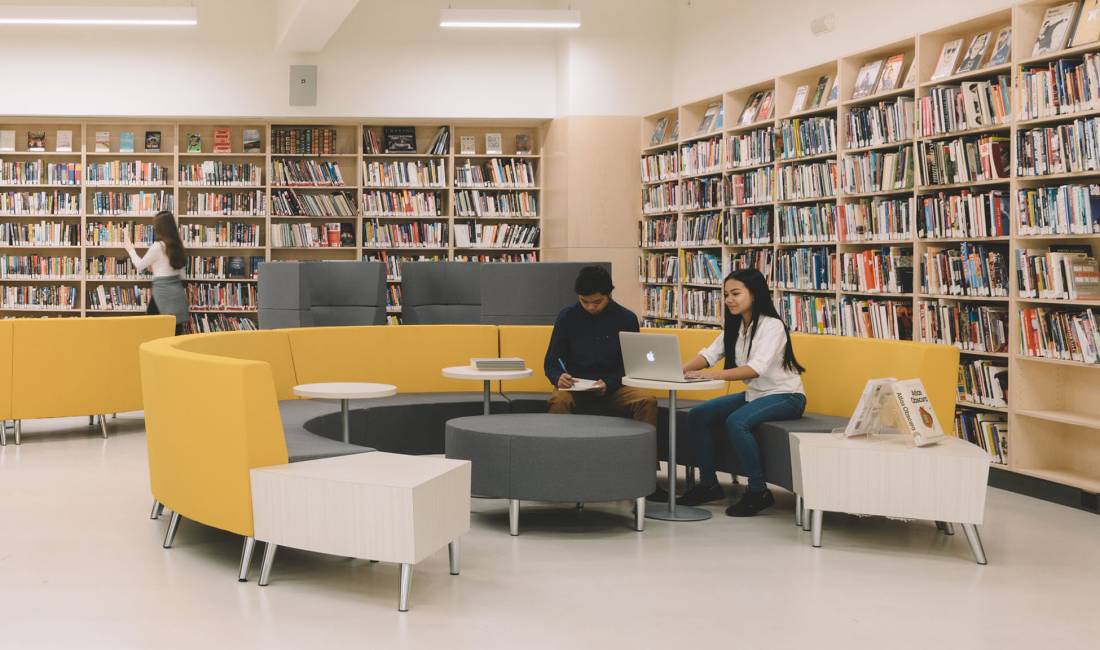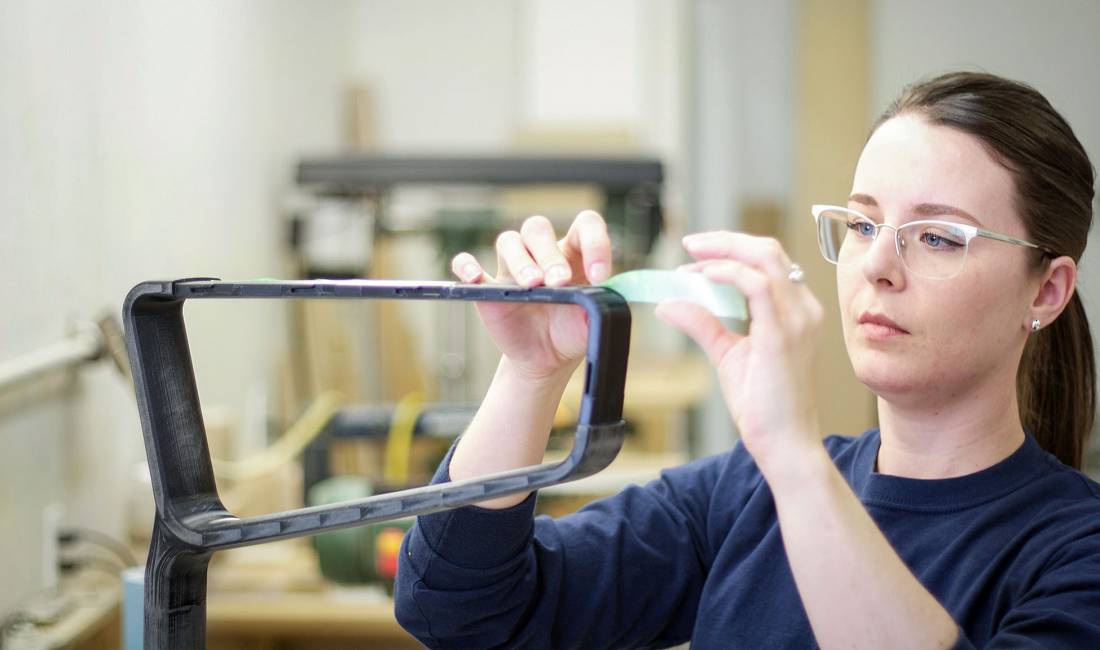Directions in Education: Supporting Lifelong Learning and Schools as Community Infrastructure
Interview | May 08, 2024
In 2023, an estimated 21 million students were enrolled in public universities and colleges across Canada¹ and the United States². With enrollment numbers rising, higher education institutes play a vital role in shaping the future of work and influencing the local communities in which they reside.
We spoke with Terry Comeau, Executive Director of Toronto Campus Development at Collège Boréal, about the evolving higher education landscape and design strategies that support education as a lifelong learning process.
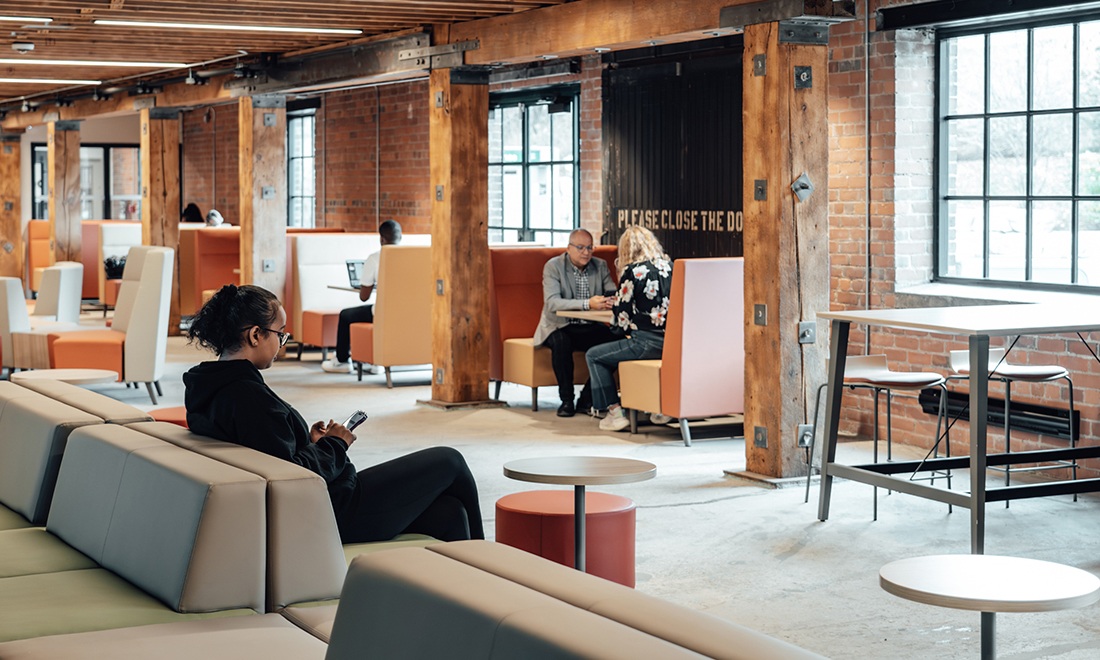
Ballara and River+ lounge seating, Sas stools and Swap tables, Collège Boréal. Photography by Patrick St-Arnaud.
Q: It seems students are in school longer than previous generations—why?
The demand for a highly skilled and educated labor force has been a key driver in the growth of higher education. It used to be that you got your degree and entered the workforce. Now, students are finding that they need both general knowledge as well as applied or specialized knowledge to get a foothold in the job market. Perhaps they get a university degree first, then realize they need applied or specialized training from a college to get that first job. We are seeing students attain multiple degrees and/or diplomas, often across different schools.
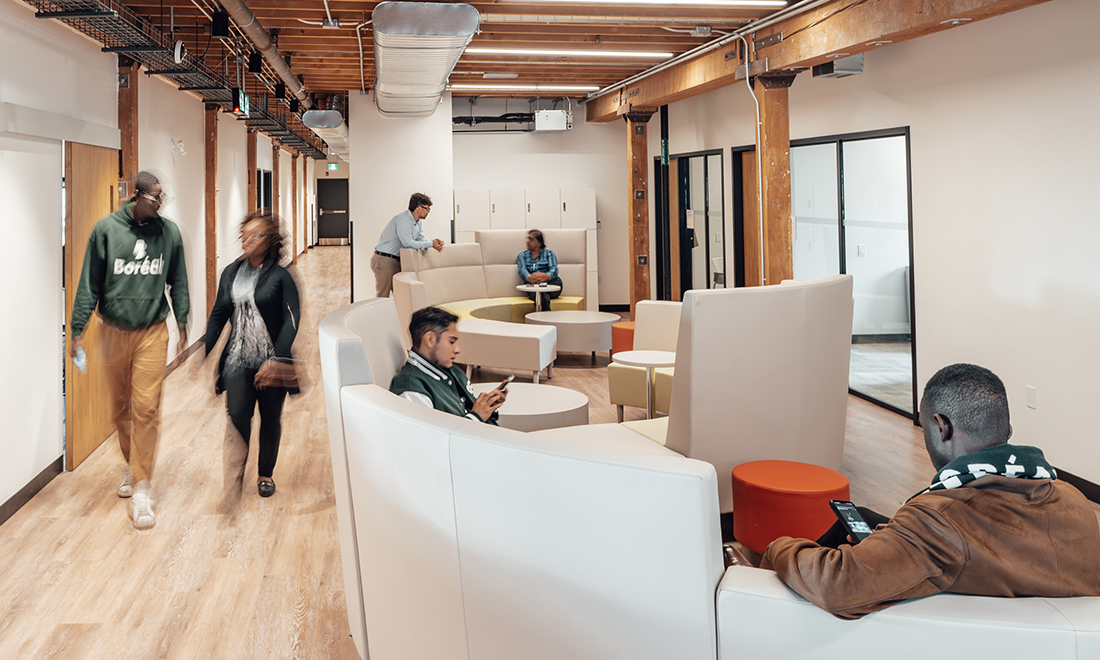
River+ lounge seating and Swap tables, Collège Boréal. Photography by Patrick St-Arnaud.
Q: Is this driving a broader demographic range on campus?
Yes, it’s no longer exclusively 18–24-year-olds who are part-time or even full-time students. Education is now being considered a lifelong process. We continually need more education and training, so you now see people from all walks of life, with all levels of education and ages on campus.
Q: How does this impact how you design?
We have to design for multivalency—spaces that are flexible, adjustable, and universal, that say, "Welcome, you belong here." And that’s tough. You need to create a space that speaks universally—furniture that supports multivalent activity but, at the same time, has a common design language—in terms of furniture style, colors, textures, and finishes. So you can have a series of spaces that perform different tasks, but they are all part of a cohesive whole and seamless. And everybody needs to feel comfortable.
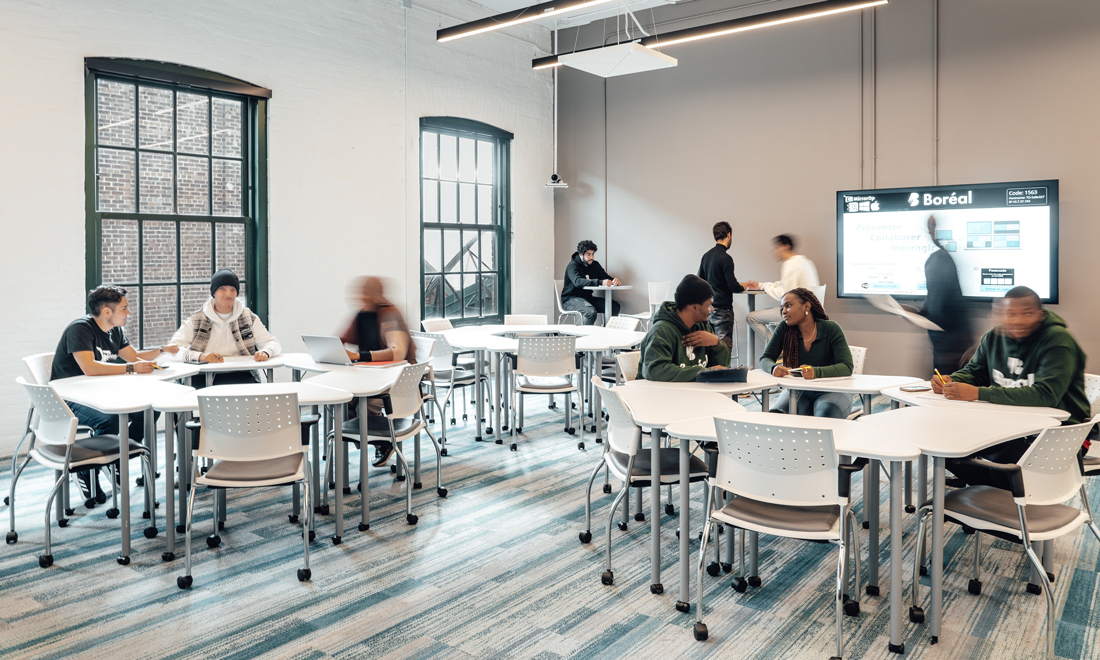
Stream seating and Zook tables, Collège Boréal. Photography by Patrick St-Arnaud.
Q: How has the growing number of international students affected your approach?
International students have been a growing segment in higher education for some time. They bring a new set of needs that differ from local students. At Collège Boréal, our international students come to us with a complex set of needs that are beyond purely academic. They have additional language, housing, employment and immigration needs. They often arrive alone, so the school becomes their community and needs to provide the social infrastructure to ensure successful integration into society.
Q: How do you connect the campus to the local community from a design perspective?
I like to think of our campus as the living room of the neighborhood. Schools don’t stand alone anymore as discreet learning institutions. They are part of the social infrastructure of the community. There is all sorts of programming going on in addition to just teaching. As such, we are designing so much more than just classrooms. For example, we purposely create places to hang out between jobs or classes. And they are for more than just social connection, providing a multivalent setting for families to gather, job interviews, dining and studying.
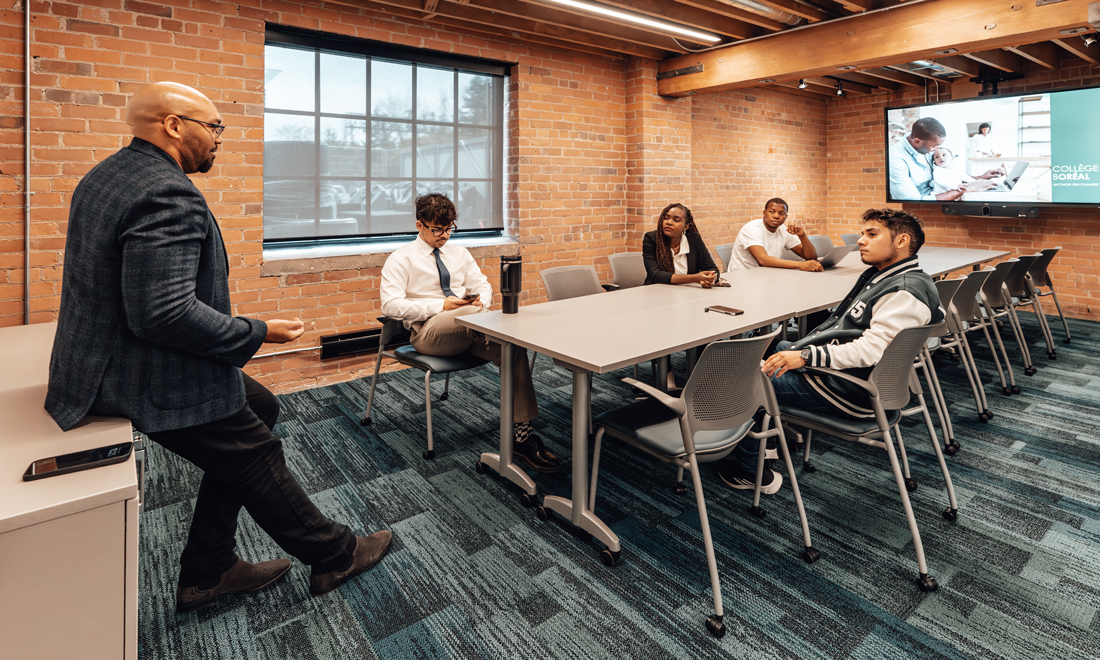
Stream seating and ConnecTABLES, Collège Boréal. Photography by Patrick St-Arnaud.
We know it’s not unusual for students to work multiple jobs to survive or commute far to get to and from campus because of housing crunches. They fall asleep at school—it used to be a negative thing. Now we understand the reality and provide safe spaces to rest. We have also designed hub spaces for the community to access and use, as well as resource spaces like a job placement center that welcomes not only students but anyone from the community as well.
Q: Connecting students to the workforce is critical at Collège Boréal, how do you support that on campus?
Society is looking for anchors. School was often all you needed. Now society is so complex, there is such a deep set of needs and skill sets required. So just going through post-secondary courses is sometimes not enough to launch people into the world. We are seeing more collaboration—between colleges, universities and the business sector—to ensure students are prepared for the work of tomorrow. We’ve created collaboration zones, resource areas, event and incubator spaces that form a bridge between learning and the workplace. From a design perspective, it’s a space that a student or a professional can walk into and feel productive and comfortable in.
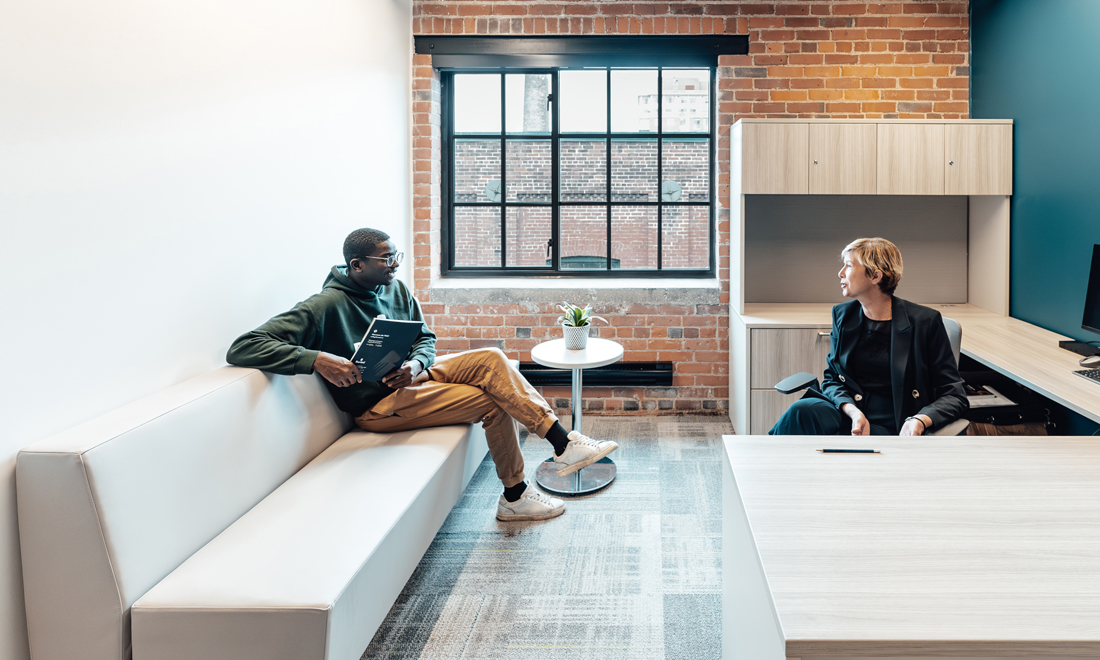
River+ seating and Swap tables, Collège Boréal. Photography by Patrick St-Arnaud.
Q: Is there a secret sauce to creating a successful campus?
Everybody is hunting for the magic formula that will attract and retain students. Ensuring our students have good integration into society and the workforce is an essential component. Our philosophy is to focus on the student as a whole person with a complex spectrum of needs to be met inside and outside of the school. We don’t want to be a standalone institution. We want to be an integral part of a broad-based community—a true multivalent resource.
Q: How do you think things will change over the next decade or so? What’s next?
We don’t know exactly what’s going to happen in the next 20 years, but I do know there will be more complexities in what we have now. More lifelong learners. More diverse student types with complex needs. There will be a need for more social support like helping students with the housing crisis we are experiencing. We’ll see deeper partnerships with corporations—innovation hubs and incubators. The key will be to design spaces flexible enough to adapt to all these needs. Or more to the point, carrying a zeitgeist of community and belonging throughout the space, through every corner, through every design moment, whether it’s the central learning commons or just a space outside a classroom.

Stream seating, Collège Boréal. Photography by Patrick St-Arnaud.
Q: What is the most satisfying aspect of designing for higher education?
The design here is circular. We don’t get three weeks to design something and then walk away. We design it, live it, tweak it, revisit it. It’s incredibly satisfying to see our results. To get to change someone’s life on a very visceral level. To make connections and see the students thrive.
¹Usher, A., & Balfour, J. (2023). The State of Postsecondary Education in Canada, 2023. Toronto: Higher Education Strategy Associates. https://higheredstrategy.com/wp-content/uploads/2023/09/SPEC-2023_v4.pdf
²Welding, L. (2024, February 7). College enrollment statistics in the U.S. | BestColleges. BestColleges.com. https://www.bestcolleges.com/research/college-enrollment-statistics
Enjoy this article? Don't forget to share.




